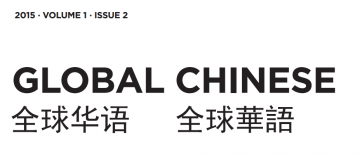Chinese Research News
SSHRC Insight Grant (2023-26)
Duff, P. with collaborators D. Li, D. Wang & Q. Wang
Sociopolitical and sociocultural dimensions of learning Chinese as an additional language: Changing global contexts, media discourse, and learners
Language education, geopolitics, and economics are often deeply entangled and also subject to change. So too are individuals’ and communities’ identities, investments, and aspirations with respect to languages (Darvin & Norton, 2015). In the early 2000s, Chinese was depicted by mainstream news media, including the front page of the Globe and Mail newspaper, as the new “must-learn” language for Anglophone Canadians and others (Duff et al., 2015). Mandarin Chinese, in particular, was portrayed as an exotic, potentially lucrative alternative or addition to European languages, such as French and Spanish, commonly taught and learned in Anglophone schools and universities. Reasons included the rise in China’s global economic and political stature and the allure and potential of knowing a language with more than a billion speakers worldwide. The Chinese government also began investing heavily in the teaching of Chinese language and culture as a form of soft-power diplomacy worldwide (Duff et al., 2013). However, in recent years the popularity of learning Mandarin has been waning in some Anglophone countries and, conversely, growing in other regions, such as Africa, the Middle East, and Asia. Why is that the case? And what impact does the changing sociopolitical status of China and Chinese have on language programs, learners, instruction, and society?
The study has two primary objectives and associated sub-studies: (1) to analyze changing English-language news media discourse associated with the teaching and learning of Chinese as a global language, and reasons for changes in the decade since 2012, when our previous study ended (Duff et al., 2015); and (2) to analyze, through 20 in-depth case studies, the experiences of racially, linguistically, and geographically diverse contemporary adult learners of Chinese at a Canadian university with the largest Chinese program in North America.
The relationships between language education, learners’ identities and agency, the communities students belong to or seek to become part of, and sociopolitical and historical factors have long been of interest to applied linguists and members of society (Ayres-Bennett & Fisher, 2022). Situations where languages fall into or out of favour for essentially non-linguistic reasons are especially intriguing (Spolsky, 2004). However, although much has been written about Chinese as a global language (Gil, 2021; Tsung & Cruickshank, 2012), there has been insufficient critical attention to recent changes in its status worldwide. Based on my earlier research on Chinese language learning in Canada and Greater China, I seek answers to research questions connected with the two aforementioned objectives, and implications for Canadian society, for the field of applied linguistics, and for the future of Chinese language education. Furthermore, most existing research in North America, including my own, has focused on either learners of Chinese from Chinese ethnic backgrounds, known as heritage language learners, or White, Anglophone learners of Chinese and their identities, communities, goals, and trajectories as potential Sinophones (Duff et al., 2013). For this study, I will expand on earlier studies to include more geographically, racially, and ethnolinguistically diverse participants originating in various regions of the world (e.g., Nepal, Cameroon, France) but now studying in Canada, since their experiences are likely quite distinct from those of local Anglo-Canadians. I will explore their histories of learning Chinese, its significance in their lives and possible futures, their multilingual identities, and the impact of changing sociopolitical contexts, media, and ideologies on their engagements with Chinese locally and globally.

Duff, P., Anderson, T., Doherty, L., & Wang, R. (2015). Representations of Chinese language learning in contemporary English-language news media: Hope, hype, and fear. Global Chinese, 1(1), 139–168
ABSTRACT
The growing body of research on Chinese as an international (or “global”) language examines linguistic, psycholinguistic, social-psychological, and orthographic aspects of acquisition primarily. There has been relatively little critical discussion or analysis of the larger social context and discourses in which Chinese language education is embedded. However, recently sociocultural, discursive, and critical aspects of the teaching, learning, and use of Chinese as an additional language have begun to receive more attention. This study analyzes circulating discourses, ideologies, and tropes related to Chinese in news media, as one means by which information and perspectives are spread by media and by which public attitudes and policy decisions are (recursively) shaped or reproduced. To this end, a large sample of English-medium news reports of Chinese language education in three Anglophone countries was created and analyzed for the years 2004 to 2012. The findings revealed that reports dealing with Chinese education tended to fall into one of several major tropes, which we have roughly classified as “hope,” “hype,” and “fear,” distinctions that parallel existing models of cyclical or amplified media coverage of innovations or otherwise newsworthy events. The sociopolitically and socioeconomically motivated occurrence of these tropes in the media, combined with the novelty of the Chinese language itself, a historically less frequently taught language in comparison with various European languages, constituted a consistent and recurring narrative. Thus, the shifting representations of Chinese learning in the media tended to appear as corollaries or “side stories” servicing the needs of larger geopolitical events and perceived or desired changes in public sentiment. These trends and their significance are illustrated and discussed in relation to Global Chinese.
|